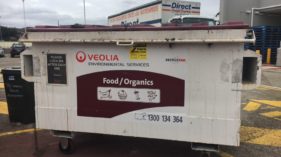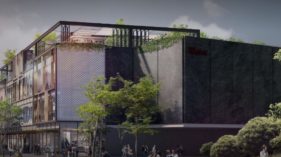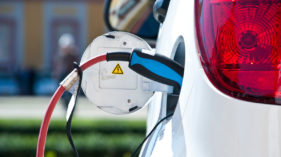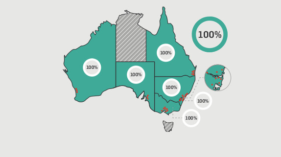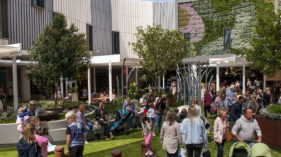Waste
In 2017 we continue our long-term environmental objectives by initiating new waste streams and recycling signage in our business operations. These initiatives have had a positive lasting impact on the sustainability culture with our retail partners. Since 2014 we have increased the share of operating waste diverted from landfill from 45% to 47%¹ as we continue to drive our asset teams to improve recycling practices.
We are socially conscious about educating our teams and retail partners about the importance of diverting waste from landfill. In New Zealand, we took further steps in our effort to divert waste from landfill including rearranging waste areas and increasing recycling signage, providing ‘how to recycle’ training to our retailers and introducing a ‘waste ambassador’ during peak periods like December to promote a values-based working community.
Landfill waste from shopping centres is the largest contributor to Scentre Group’s indirect (Scope 3) emissions. We also generate significant amounts of demolition and construction waste materials. Based on large projects in 2017, the percentage of design and construction waste materials recycled in projects was 99% (91% in 2016).
Our shopping centres experience significant foot traffic and trade cycles that generate large amounts of operational waste. In 2017 Australian assets diverted 47%¹ of waste from shopping centres to landfill with 41%¹ divested to recycling and composting waste streams, up from 37%¹ in 2016. This was due to a renewed focus on the diversion of organic and coffee grounds from landfill, an initiative that required significant engagement with our food tenancies and restaurateurs in particular.
"Australia discards an estimated 4.06 million tonnes of food every year."
That food waste is valued at $8 billion and generates large amounts of greenhouse gas emissions. As dining and entertainment precincts increase in prominence within our centres, we will need to adopt innovative organic waste reduction and recycling practices to benefit our communities and the environment and reduce costs to the business.
Our 2016 strategic initiative to recycle organic waste, including coffee grounds, from across our portfolio for use in closed loop energy recovery facility was continued in 2017. The initiative reduced landfill waste costs, generated clean energy to power the community and reduced greenhouse gas emissions. During 2017 our centres collected over 8,000 tonnes of organic waste unfit for sale from food retailers, an increase of nearly 55% in comparison with 2016.
In 2017 the total waste generated by our business was approximately 253,511 tonnes, up 59% compared to 2016 mainly due to the differing nature of the development projects underway during the year. However, over 70% of this waste was recycled and the majority classified as non-hazardous. Hazardous waste from demolition or excavation activities generated an estimated 258 tonnes, an increase of 67% compared to 2016. The waste was disposed in accordance with regulatory requirements. Scentre Group has strict health and safety procedures in place in relation to handling and disposal of hazardous waste products, in particular asbestos.
Footnotes
¹The diversion from landfill figures based on the waste to landfill and recyclable materials collected has been revised during the 2017 reporting period due to a legacy error in our contractor’s reporting and incorrect categorisation of waste processed through recycling recovery facilities and disposed in landfills with gas capture. As a result, the diversion from landfill performance result has been recalculated and adjusted accordingly. The 2016 and 2017 trend reflects these adjustments.
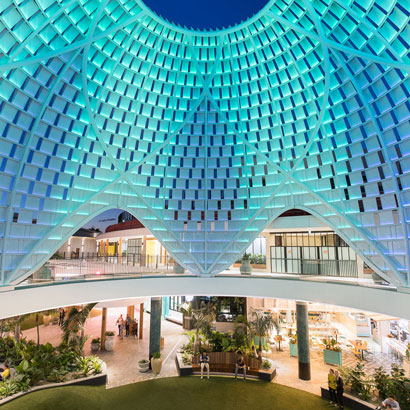
Energy & Emissions
In 2017 we continued our efforts to improve energy efficiency. The Group’s operations reflected a year-on-year reduction in electricity consumption of 3% and a decrease in scope 1 & 2 greenhouse gas emissions of 2%. This continues the downward trend in reduction of both energy consumption and emissions generation that has been in place since 2014.

Materials
As a procurer of large amounts of building products and materials, we have significant influence on the sustainability of our supply chain. This represents a major opportunity for the Group’s design and construction, and operations to continue reducing our impact on the environment.
read more
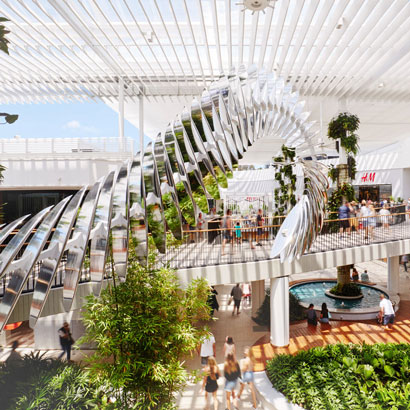
Designing for a Resilient Future
We are actively designing our new and redeveloped assets to be resilient against the impacts of climate change. It is our vision to find the harmonious balance between functionality, commerciality and sustainability.




